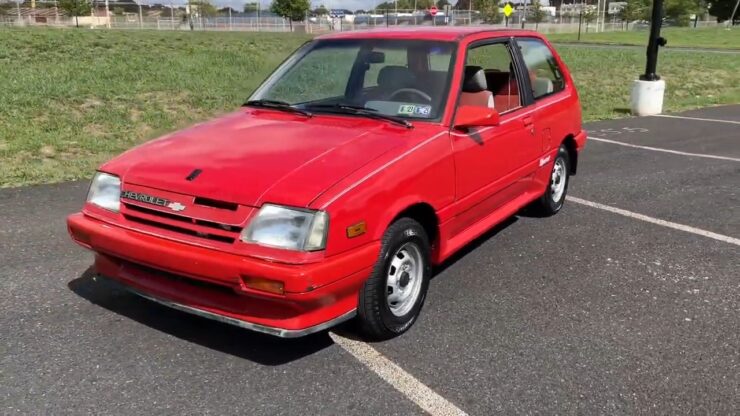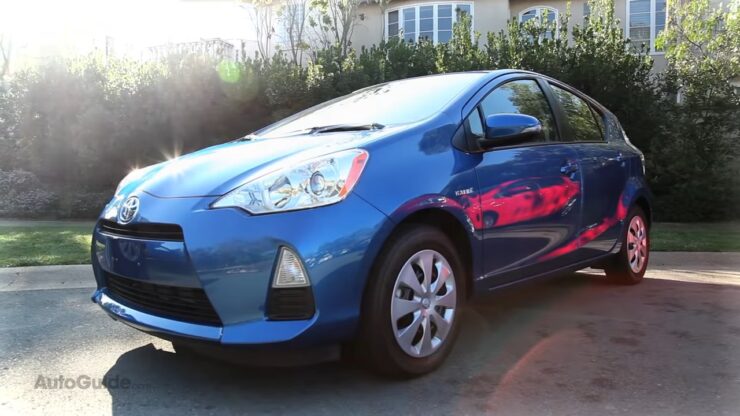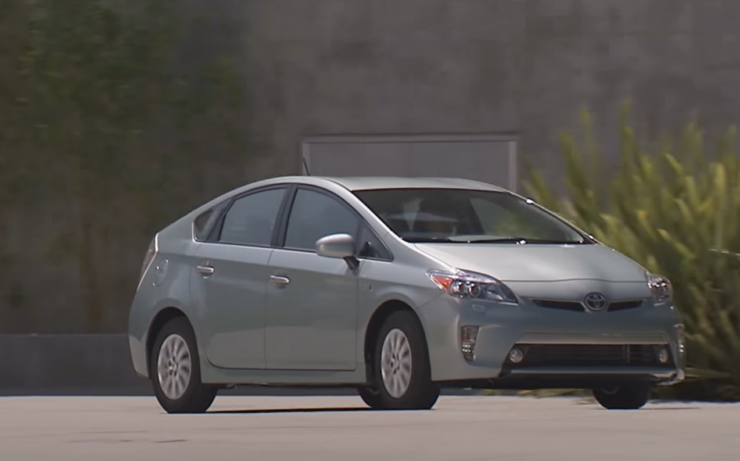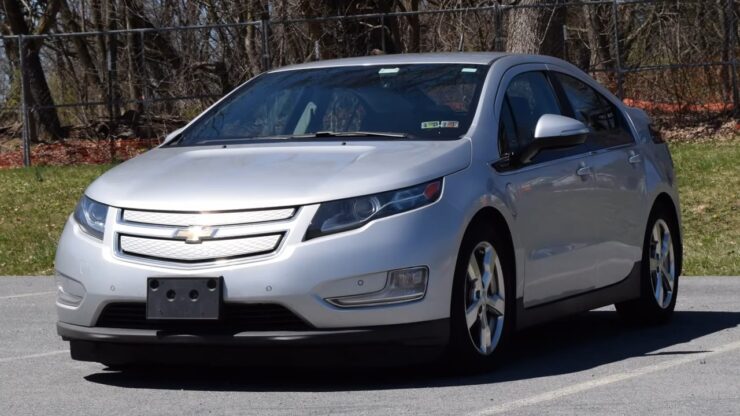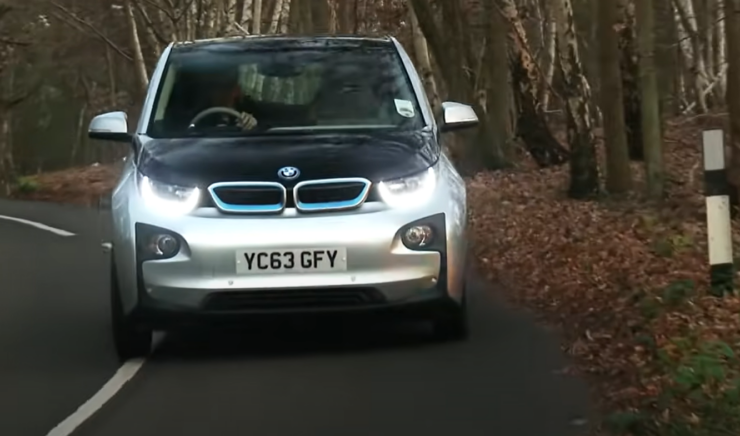Hybrid engines have certainly reduced fuel consumption in vehicles. However, nearly three decades ago, lightweight cars could achieve almost 50 miles per gallon without the need for hybrid technology.
The reintroduced Mitsubishi Mirage, boasting 44 miles per gallon on highways and an average of 40.5 miles per gallon, is reminiscent of earlier fuel-efficient cars.
Models like the Geo Metro, Hyundai Excel, Ford Fiesta, and the initial versions of the Honda Civic were not only affordable but also impressively fuel-efficient, earning them the nickname “econobox.”
While these vehicles lacked luxury features — to the extent that manual window rollers were standard and safety features were minimal — they were lightweight and consumed less fuel.
In 2008, when fuel prices surged past $4 a gallon, these older models, like the Geo Metro, became sought after despite their basic features. Even a 1989 model would offer an impressive 47 miles per gallon, making it one of the top fuel-efficient gasoline vehicles.
However, the used car market has become increasingly challenging. According to Manheim Consulting’s Used Vehicle Index, used car prices have risen by over 2% compared to the previous year. The index peaked in January, reaching its highest since 2012, due to factors like reduced rental fleet purchases during the recession and the impact of General Motors and Chrysler’s post-bankruptcy decisions.
To achieve the 54.5 miles per gallon target set by the Department of Transportation and Environmental Protection Agency by 2025, car manufacturers will need to address the slow progress in fuel efficiency of contemporary gasoline cars.
While hybrids are making a difference — and are slowly entering the used car market since the Toyota Prius’s introduction to the U.S. over 15 years ago — consumers often need to look back to older models to find the fuel efficiency they desire.
Using data from the EPA’s FuelEconomy.gov and insights from Kelley Blue Book and AskPatty analysts, we’ve curated a list of the top fuel-efficient gasoline vehicles. This list includes not only an overlooked early hybrid but also the most fuel-efficient econobox ever made.
Our List
10. 1986 Chevrolet Sprint ER
- Miles per gallon: 44 city, 53 highway, 48 combined
You couldn’t make a car like this today. Mitsubishi tried with its Mirage, but only got to a combined 40.5 mpg. ”The reason why cars like the Chevy Sprint, Geo Metro, Ford Fiesta and Honda Civic from the late ’80s get such great fuel economy is they are small, lightweight cars powered by small, lightweight engines, and the vehicles were not bogged down by heavy items we take for granted today, like power windows, ABS and airbags,” says Brandy Schaffels, automotive industry analyst and chief editor of automotive site AskPatty.com.
Just keep that in mind when you’re trolling the used car listings for this one. Heated seats, power windows that won’t pinch you — none was standard or even an available feature at the time.
“If memory serves me, the Chevy Sprint’s EPA numbers reflect a procedure that was altered subsequently, so they are a bit optimistic,” says Jack Nerad, executive editorial director for Kelley Blue Book. “At the same time, one has to marvel that a conventional gas car of 30 years ago nearly rivals the current mileage champs.” Especially a vehicle with such muddled origins as the Sprint’s. It was actually made by Suzuki and known as the Suzuki Cutlus in Japan and both the Geo Metro and Chevy Sprint here in the states.
It was part of a long-gone era of compact, lightweight econoboxes that is only now affecting modern contemporaries such as the Mirage, Chevy Sonic and Toyota Yaris — not to mention midsize SUVs and full-sized trucks. “In the 1980s and 1990s there were several cars rated at over 50 mpg on the highway,” says Karl Brauer, senior analyst at Kelley Blue Book.
“These cars utilized a small engine in a lightweight body, the latter of which faded away as more safety equipment was added to vehicles in the late 1990s and 2000s. Now, with [vehicle mileage] standards steadily rising, we’re seeing a shift back to lighter vehicles featuring advanced materials like high-strength steel, aluminum and even carbon fiber.”
8. Tie 2010 Toyota Prius/2012-2015 Toyota Prius c
- Miles per gallon: The 2010 Toyota Prius offers 51 mpg in the city, 48 mpg on the highway, and a combined 49.5 mpg. In contrast, the 2012-2015 Toyota Prius c provides 53 mpg in the city, 46 mpg on the highway, and a combined 49.5 mpg.
The classic Prius remains a favorite for its outstanding fuel efficiency, a hallmark of the brand. However, it’s the additional features of the Prius that continue to attract buyers, even as the market for fuel-efficient cars becomes more competitive.
The original Prius boasts a spacious 21.6 cubic feet of cargo space, which expands to 40 cubic feet when the seats are folded. It also offers a heads-up display on the windshield, a multimedia system with an app suite, an optional solar roof that activates an internal fan to cool the car when parked, and an optional remote air conditioning system. For those willing to compromise on space, the compact Prius c is an excellent choice.
The Prius c offers 87 cubic feet of seating space and 17 cubic feet for cargo. Its primary appeal is as a cost-effective and efficient vehicle for city dwellers, with its impressive 53 mpg in urban settings being a significant selling point.
Jack Nerad, the executive editorial director for Kelley Blue Book, comments on the dominance of hybrids in the fuel-efficient car market. He notes that hybrids are essentially gasoline cars that occasionally receive support from battery-powered electric motors. Contrary to some perceptions, hybrids are not purely electric vehicles.
6. Tie 2013-2015 Ford C-Max Energy/2013-2015 Ford Fusion Energy
- Fuel Efficiency Equivalent: 55 mpg in the city, 46 mpg on the highway, and a combined 51 mpg.
The resemblance between the C-Max and the Prius is no coincidence. Ford designed the C-Max with the Prius in mind, aiming to match its appearance, price point, and features. While the hybrid version of the C-Max doesn’t quite match the Prius in some aspects, its plug-in variant boasts a superior electric-only range.
A notable advantage of the C-Max is its assembly in Wayne, Michigan, giving it a “Made in the U.S.A.” distinction that the Prius lacks. Additionally, the C-Max enjoys benefits similar to the Prius, including state and federal rebates and access to carpool lanes even with a single occupant. For those who aren’t fans of the Prius’s design and prefer to showcase their loyalty to Ford, the Fusion plug-in hybrid is an excellent choice. It retains the appearance of its gasoline-only counterparts.
5. 2000 Honda Insight
- Fuel Efficiency: 49 mpg in the city, 61 mpg on the highway, and a combined 53 mpg.
The 2000 Honda Insight, a hybrid that was somewhat overshadowed in its time, certainly deserved more recognition. Its unique wheel covers and extended design made it stand out, but not necessarily in a good way, especially when compared to the more popular and pricier Prius.
In terms of size, the Insight once led the hybrid pack, offering 85 cubic feet of passenger space and a generous 35 cubic feet of cargo space when the rear seats were folded. It was also ahead of its time in terms of technology. Today, as a vintage model, the Insight provides an opportunity for enthusiasts to own a quality hybrid without breaking the bank. However, potential buyers should inspect its battery before purchasing.
KBB’s Brauer comments, “The most fuel-efficient vehicles often merge a traditional engine with an electric motor and a plug-in battery. However, cars like the Toyota Prius, the original Honda Insight, and older models like the Chevrolet Sprint achieve comparable fuel efficiency without the need for plugging in.”
4. 2014-2015 Cadillac ELR
- Fuel Efficiency: 54 mpg in the city, 55 mpg on the highway, with a combined 54.5 mpg.
Cadillac’s hybrid, the ELR, had a somewhat rocky introduction, partly due to its initial advertising approach. Despite being manufactured at GM’s Detroit Hamtrack facility, only 1,316 units were sold.
In comparison, Tesla’s Model S, a fully electric luxury car, sold around sixteen times more units in 2014, even though it was priced similarly to Cadillac’s plug-in hybrid. The takeaway?
No matter how many luxury features you offer, if you’re going to make a bold entrance, you need the performance to match the hype.
3. 2012-2015 Toyota Prius Plug-In
- Fuel Efficiency: 59 mpg in the city, 56 mpg on the highway, with a combined 57.5 mpg.
The name “Prius Plug-In” might be slightly misleading, considering its limited electric range. A three-hour charge for a mere 11-mile drive without gasoline suggests both a very short daily journey and a lot of patience from the driver.
However, the Prius compensates for its electric range shortcomings with a commendable 50 mpg when operating as a hybrid, placing it near the top in its category. Additionally, owners benefit from state and federal incentives, the privilege of using the carpool lane even when driving alone, and features like 21.6 cubic feet of cargo space, remote climate control, heated seats, a navigation system, and the Entune app suite.
2. 2013-2015 Chevrolet Volt
Fuel Efficiency: 63 mpg in the city, 61 mpg on the highway, with a combined 62 mpg.
The Chevrolet Volt doesn’t quite match up to its all-electric counterparts in terms of being a tech-laden luxury vehicle. If you drive the Volt beyond its 35-mile range, it essentially becomes an expensive and somewhat less efficient hybrid.
However, its all-electric range surpasses any other plug-in hybrid available. This, combined with its quiet interior, paved the way for its 2016 makeover. The redesigned model boasts an increased battery capacity, reduced weight, and an extended all-electric range from 38 miles to 50. Additionally, the newer model is priced about $10,000 less, reflecting the transitional technology that the Volt embodies.
1. 2014-2015 BMW i3 REx
Fuel Efficiency: 97 mpg in the city, 79 mpg on the highway, with a combined 88 mpg.
The BMW i3 REx is even more efficient, boasting 124 miles per gallon equivalent, when it’s not equipped with the optional on-board gasoline generator that extends the vehicle’s range to 162 miles. While this is significantly less than the 270-mile range of Tesla’s Model S, it’s still an impressive mileage for a gallon of gas.
Constructed from lightweight materials like aluminum and carbon fiber, the i3 is notably lighter than many other electric vehicles. This design choice means it needs a smaller battery, which in turn consumes less energy.
With a powerful 170 horsepower and ample interior space, the i3’s speed is only outmatched by the Tesla Model S in the electric vehicle category. Its design comfortably accommodates four adults, and the fold-flat feature adds to the i3’s practicality.
FAQ
What was the most fuel-efficient car in 1990?
The most fuel-efficient car in 1990 was the Geo Metro XFI, which achieved up to 53 MPG in the city and 58 MPG on the highway.
What car gets 136 MPG?
The 2019 Hyundai Ioniq Electric achieves 136 MPGe.
What is good Litres per 100km?
A good Litres per 100km (L/100km) rating would be lower, indicating better fuel efficiency. For many compact cars, a rating of 5 to 7 L/100km for highway driving is considered good. For larger vehicles or SUVs, a rating of 8 to 10 L/100km might be considered efficient.
Are hybrid cars worth it?
Hybrid cars can be worth it depending on your driving habits and the price difference between the hybrid and non-hybrid versions. They typically offer better fuel efficiency and can save money on fuel in the long run. Additionally, they produce fewer emissions, making them a more environmentally friendly option.
Do any cars get 50 mpg?
Yes, several cars, especially hybrids and electric vehicles, achieve 50 mpg or more. Examples include the Toyota Prius and the Honda Insight.
Are old cars fuel efficient?
Older cars, especially from the 1980s and 1990s, had some models that were very fuel-efficient due to their lightweight design and smaller engines. However, they often lacked modern safety features and amenities.
Do older cars lose fuel efficiency?
Yes, as cars age, various factors such as engine wear, outdated technology, and less efficient components can lead to decreased fuel efficiency.
Final Words:
Fuel efficiency has always been a significant concern for car buyers, and as technology advances, manufacturers continue to innovate to meet these demands. While modern hybrid and electric vehicles are pushing the boundaries of fuel efficiency, it’s essential to remember the achievements of older models.
These vehicles, though lacking in luxury features, set the foundation for the fuel-efficient cars we see today. As we move forward, it’s crucial to strike a balance between efficiency, sustainability, and the overall driving experience.


